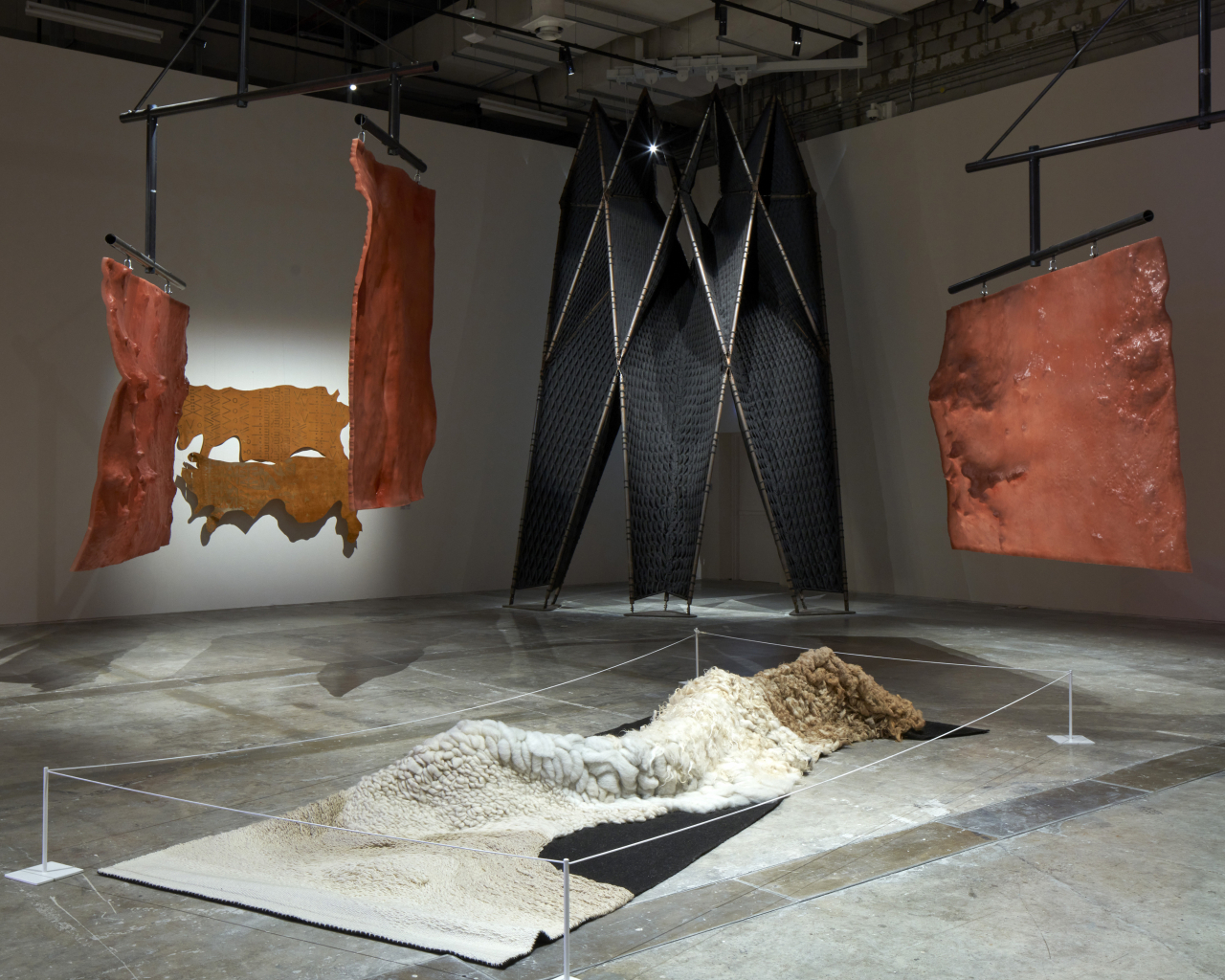
DOHA, Qatar -- Craftsmanship brings together the history, geography and aesthetics of the people of a region while offering a glimpse into their philosophies and lifestyles. Arab craftsmanship has a long-standing history, playing a crucial part in the culture deeply embedded in ordinary people’s lives.
Qatar Museums in Doha are presenting the heritage of Arab design at the inaugural Design Doha biennial, which kicked off Saturday, inviting some 70 contemporary artists from the Middle East and North Africa. The inaugural design biennial was initiated by Qatar Museums Chair Sheikha Al Mayassa bint Hamad bin Khalifa Al Thani.
“Recognizing that there are far too few platforms in our region for designers to present their work, the inauguration of Design Doha is a testament to the excellence and innovation of our region's design community,” she said.
The event was led by American artistic director Glenn Adamson and is on view in Msheireb Downtown Doha. Featuring the main exhibition, “Arab Design Now," curated by Rana Beiruti, the biennale includes a variety of programs that shed light on art and architecture in the region, such as “Colors of the City: A Century of Architecture in Doha,” “Weaving Poems,” “Cultural Kinship” and “Crafting Uzbekistan: Tradition in Threads.”
The exhibition "Arab Design Now" runs through Aug. 5 at M7 while some other programs close on March 30.

“The exhibition 'Arab Design Now' consists of both loans and newly commissioned works. We wanted to celebrate the diversity and make sure that we share all the stories that this region has to offer. We have a very long history of craftsmanship in the Arab world and a lot of designers in the region have dug into the past and tried to revive traditional practices,” Beiruti told the press on Sunday.
There is a stack of cotton blankets and mattresses within a niche titled “Al Matwa” on a wall, created by Jordanian textile artist Ishraq Zraikat and Jordanian designer Tasneem Zraikat. The cotton installation is an homage to the traditional Middle Eastern linen closet, which was hand-upholstered in Jordan by expert artisans using traditional techniques, according to the description of the work.
“This is a very typical closet in the Middle Eastern region. I have seen this at my grandma’s,” a visitor to the biennale told The Korea Herald, looking at the installation.
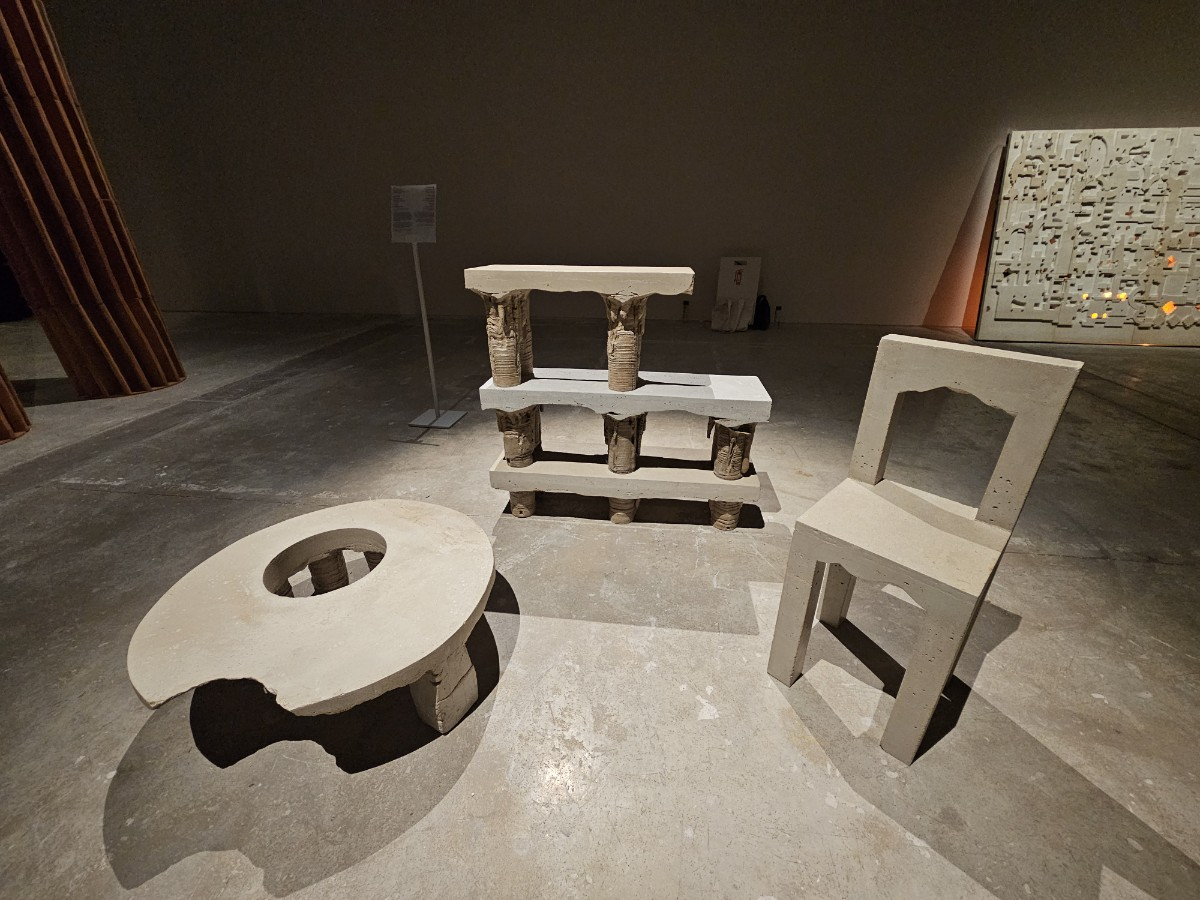
Lebanese artist and architect Christian Zahr’s “Coffee Table,” “Bookshelf” and “Chair” are created with cement, sand, water droplets and most importantly, time. The pieces of furniture, reminiscent of an old temple according to the artist, were made during the pandemic lockdowns in 2020, which provoked him to think about the relationship between humans and nature.
“Time is part of the conception of production of this work. The future was not clear so I wanted to come back to nature. It is also research on the relation between something you plan and something unpredictable. So all this form was unpredictable. It was done by nature,” he said.
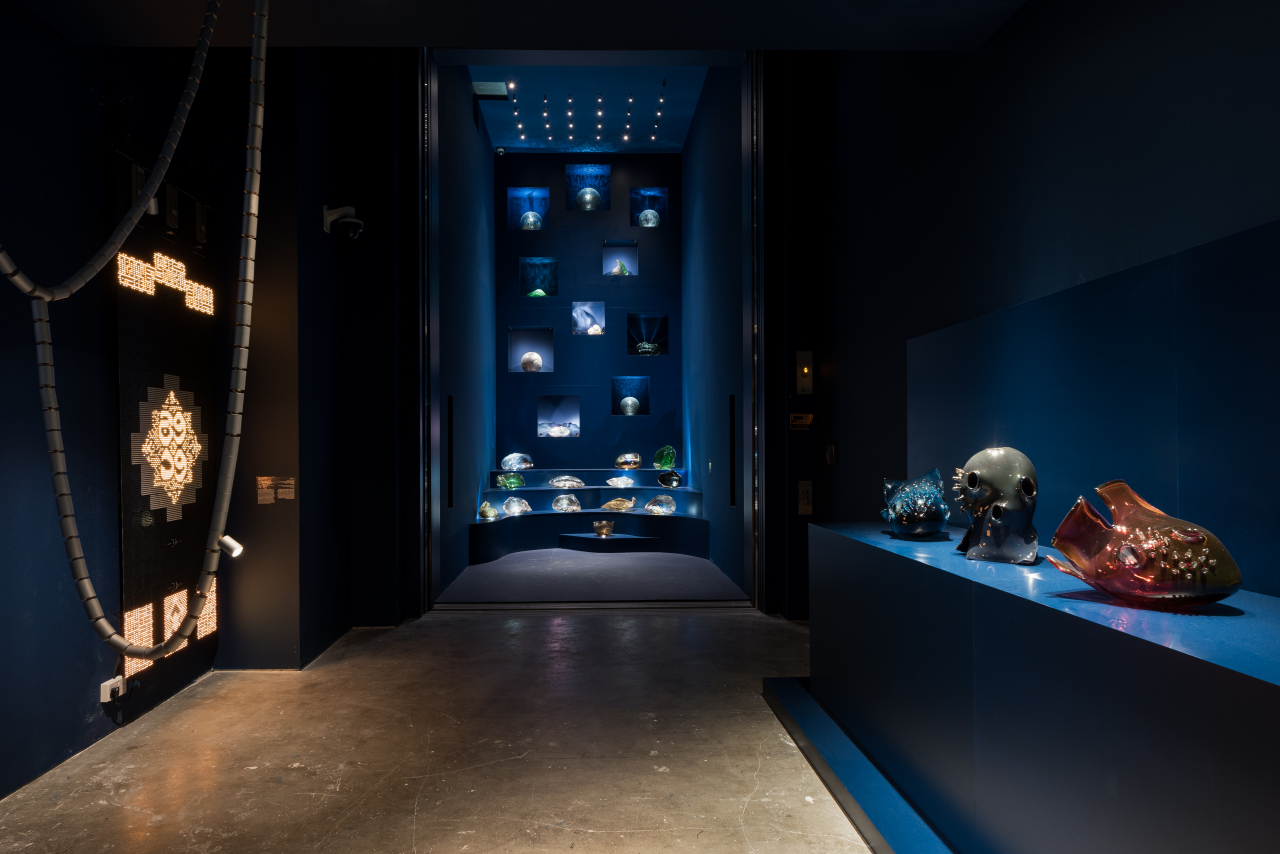
Glass is a popular material for Arab designers at the biennial and is used to show how different cultures collaborate. An installation of “Whispers from the Deep” by Lebanese-Polish sisters Tessa and Tara Sakhi comes into sight as an elevator that takes the visitors to the next level of the exhibition opens.
The splendid set of glass craftworks that evokes the impression of underwater sea creatures was made of various discarded metals from factories in the Veneto region in Italy infused with glass. The works aim to draw connections between the Venetian lagoon and the glassblowing heritage of Lebanon, according to the artists.
Upon arriving on the next floor, the suspended light sculpture “Constellations 2.0: Object. Light. Consciousness,” handcrafted from more than 5,000 pieces of Murano glass linked together, casts reflections across the room, generating seemingly cosmic patterns of light. Palestinian artist and architect Abeer Seikaly combined traditional Venetian glassmaking with the weaving practices of Bedouins, a nomadic Arabic-speaking tribe.
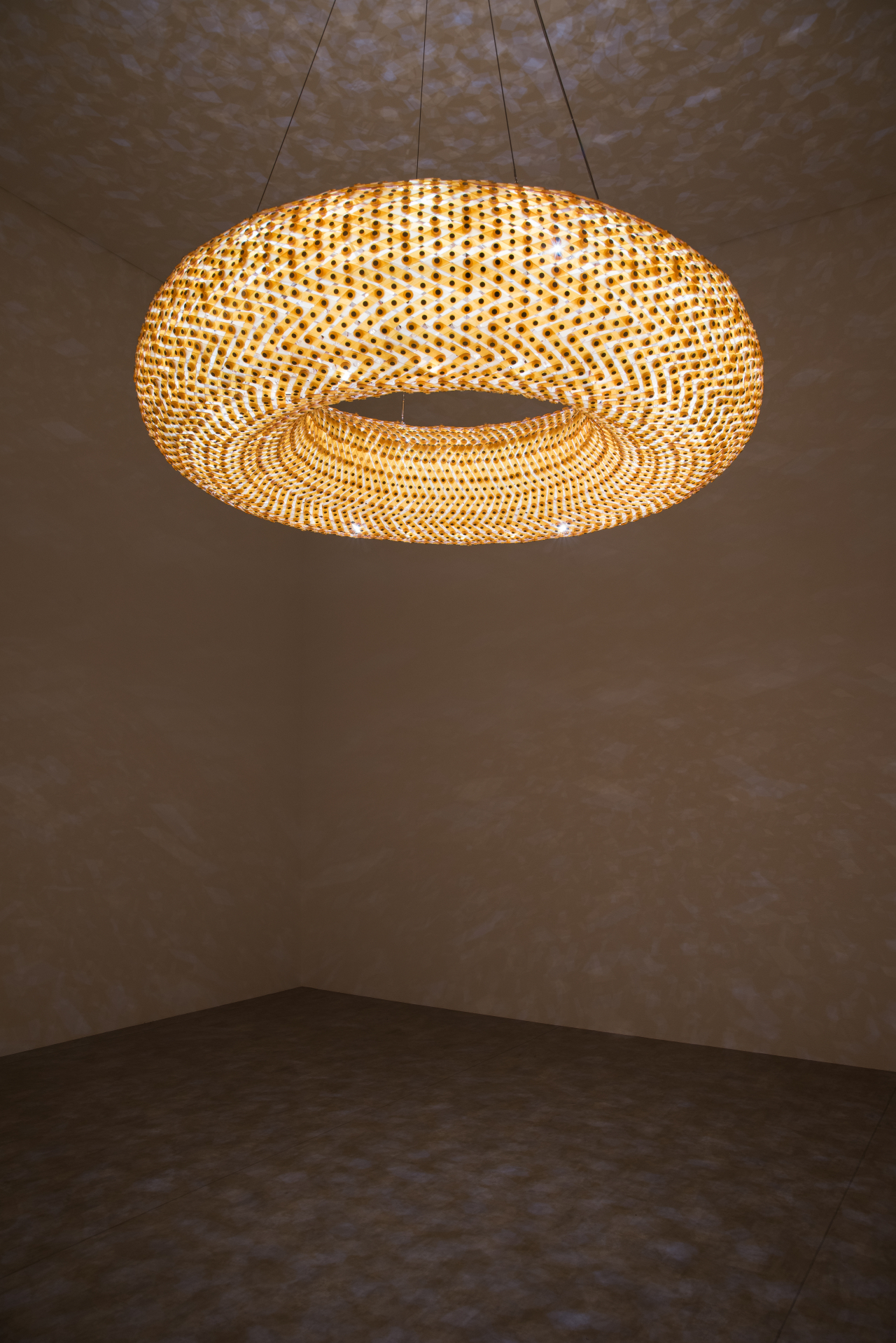
“I was inspired by Arab weaving practices, which is mainly what I do. I work with traditional weaving practices with the Bedouins. But I thought it would be interesting to merge different types of heritages -- from Bedouin weaving but also Murano glassmaking practices as well,” Seikaly said showing her lighting piece, which weighs 200 kilograms.
A separate exhibition “Weaving Poems” is another highlight of the biennial, as it shows the cultural landscape of Afghanistan through carpets co-created by women weavers of Bamiyan and Afghan-British designer Maryam Omar, who has worked for 10 years with carpet weaving communities in Afghanistan.
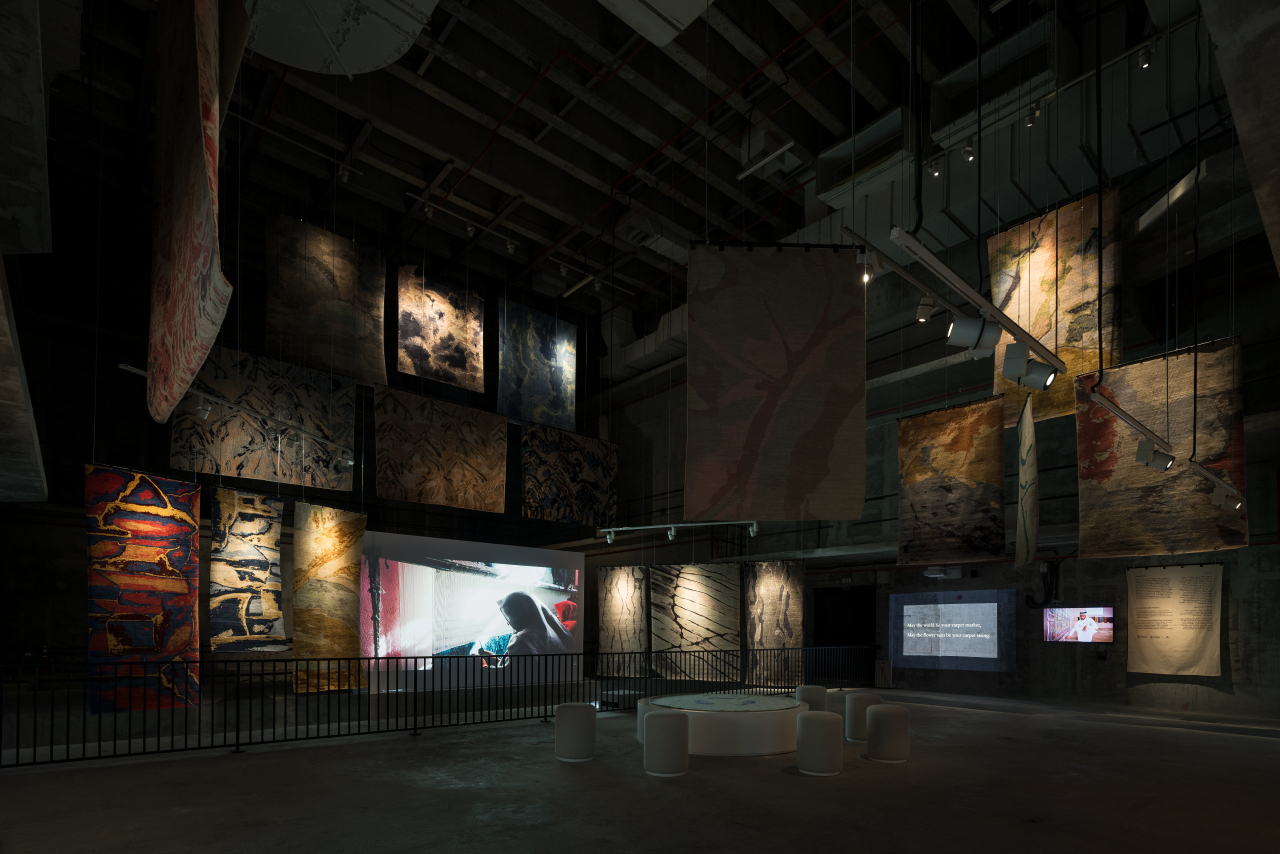
A separate exhibition, “Weaving Poems,” is another highlight of the biennale, as it shows the cultural landscape of Afghanistan through carpets co-created by women weavers of Bamiyan and Afghan-British designer Maryam Omar, who has worked for 10 years with carpet weaving communities in Afghanistan.
“I hope by experiencing my work, viewers will feel the value the carpet weaving tradition and carpet weavers hold today,” she said.
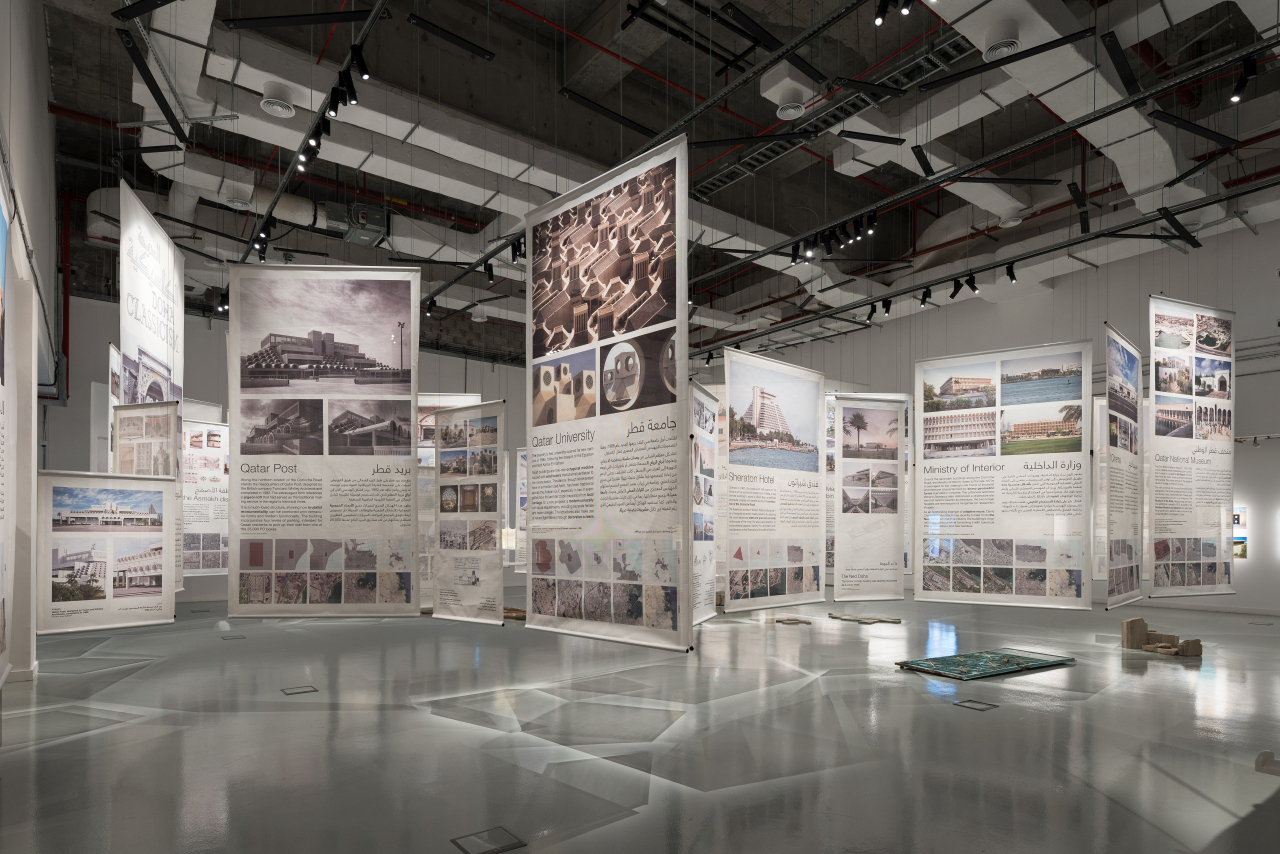
Another exhibition, "Colors of the City: A Century of Architecture in Doha," is an archival architecture exhibit that shows the history of urbanism in Qatar. The exhibition showcases how Qatari architecture and interior designs were influenced by South Asian culture. It shows the Sheraton Hotel, which opened in 1982, as the symbol of modernism in Doha. The first building to stand in West Bay, it was designed by American architect William Pereira.
"The energy in the region is extraordinary and Doha has rapidly become a global design destination. The biennial will take its place alongside museums, stadiums, studios and infrastructure, creating a platform for the creative industries into the future," biennale director Adamson said.





